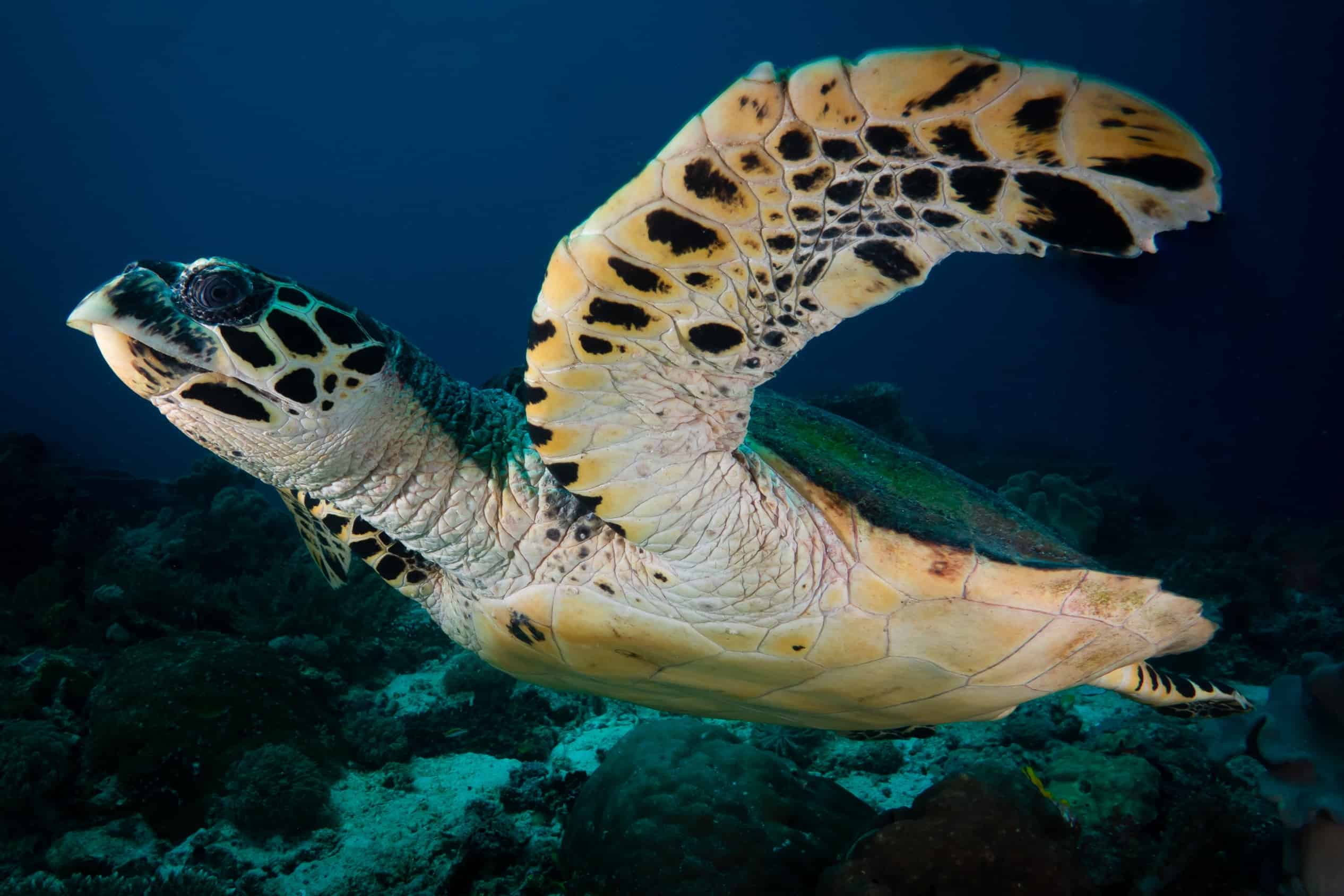White sandy beaches, pristine waters, and big wave surfing. These must be the first visuals that pop up in your mind when you hear Hawaii.
But Hawaii is also home to a variety of impressive animal species. And if you’re an explorer, you’ll find delight in the fauna of these islands.
What animals live in Hawaii Volcanoes National Park?
The animals living in Hawaii Volcanoes National Park include Hawksbill sea turtles, Green sea turtles, Hawaiian Blackfoot, Hawaiian hawk, Hawaiian Goose, Kamehameha butterfly, happy face spider, and the hoary Hawaiian bat, among others.
Let’s take a closer look at these native Hawaiian animals. We’ll first see a few marine animals, then we’ll move to birds and insects, and lastly we’ll look at the only native mammal of this island.
Hawksbill Turtle- the Most Captivating Shell in Hawaii
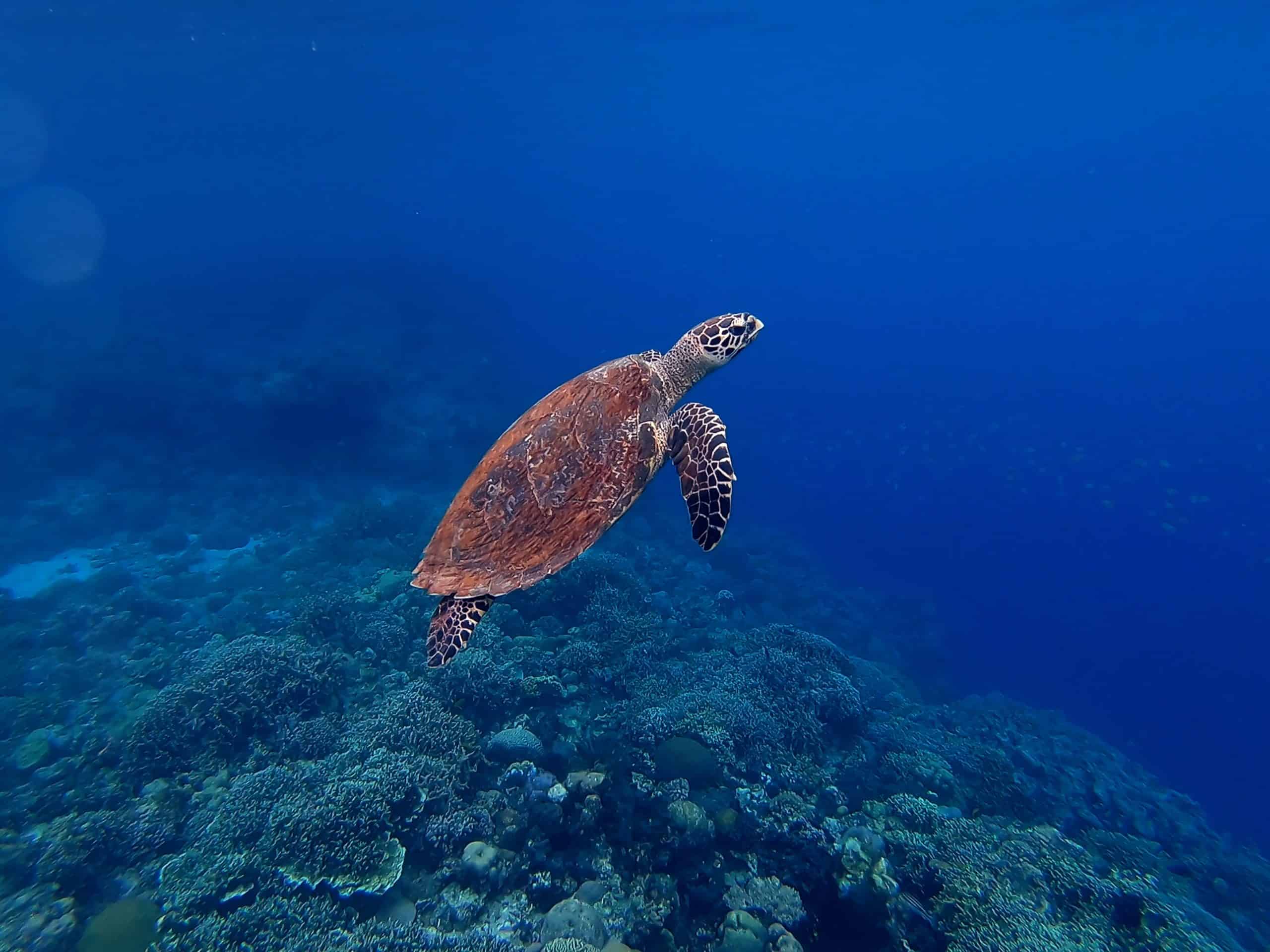
The hawksbill turtle is a critically endangered sea turtle that you can spot on these islands and in the waters around the islands. You’ll find it easy to recognize one because it has a tapered head with a sharp beak. It’s beak almost resembles that of a bird’s, hence the name.
Hawksbill turtles have a colored shell. Unlike shells of other turtles, these shells have serrations, and the plates overlap, giving hawksbill turtles a distinct appearance. Younger hawksbill turtles have heart-shaped shells that elongate as they mature. Unfortunately, hunters poach these turtles for their shells to make jewelry, which sadly has reduced their population.
Out of the seven species of sea turtles, you’ll find five living in Hawaii’s waters. You are likely to spot some of them while diving near the shoreline. Check out this highly recommended full-body wetsuit if you plan to explore the waters here.
Green Sea Turtle- the Second Largest Sea Turtle
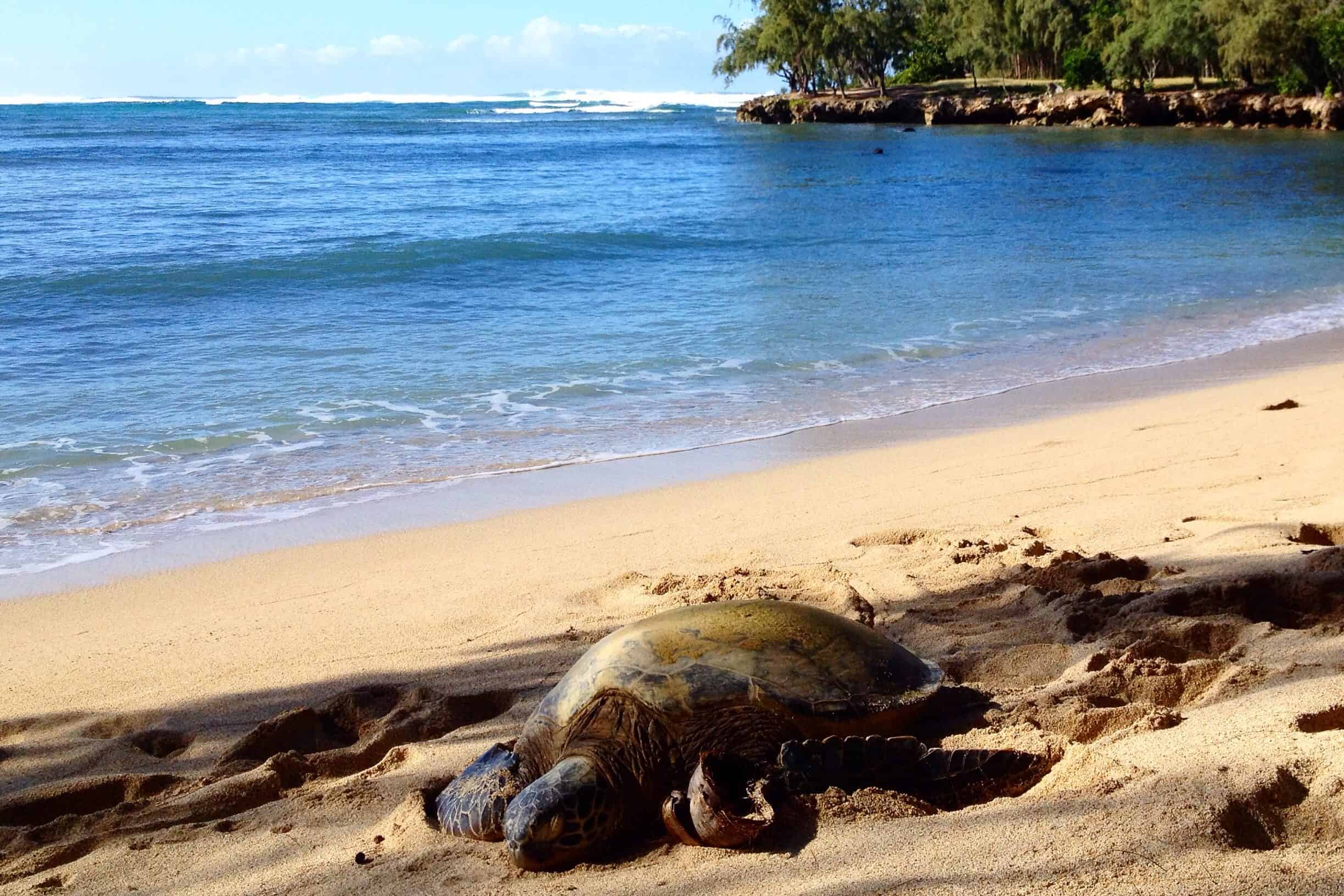
This turtle doesn’t have a green shell. So why is it named the green sea turtle then?
Green sea turtles have greenish skin. They have green-colored fat because they’re herbivorous and strictly eat plants like algae and seagrass. Their shell, however, is generally olive or brown.
You’ll find these turtles are more common than the Hawksbill turtles. They are larger and heavier than the Hawksbill turtles and can weigh up to 700 pounds. The green sea turtle is the second largest amongst all sea turtles, growing up to 5 feet in size.
It’s easy to differentiate the green sea turtle from the hawksbill turtle. The former has a round head, and the plates on its shell are not serrated and overlapping. You are likely to spot these turtles near shore rocks, eating algae or sunbathing along the shoreline.
If you plan to hang around for long near the beach, don’t forget to bring your camera.
Hawaiian Blackfoot or ‘Opihi- the Fish of Death
It’s called the “fish of death” locally, but ‘Opihi is a harmless limpet. It’s referred to this way because the fishermen have to navigate the islands’ most dangerous coastlines to harvest it.
You’ll find these limpets clinging to rocks tightly. They have a powerful suction-cup-like foot beneath their shell to move and cling to rocks. An ‘Opihi can stick to a rock with impressive force, making it nearly impossible even for a strong man to remove.
‘Opihi are the most desirable delicacy of these islands. People consume them during celebrations, and if given as a gift, they’re received with utmost gratitude. The Hawaiian culture values selflessness and the ‘Opihi embodies that spirit due to the risks involved in harvesting it.
Within the Hawaii Volcanoes National Park, you’ll find two out of the three endemic species of ‘Opihi. You’ll notice the yellow-footed ‘Opihi located below the tide line, while the black-footed ‘Opihi lives in higher places where the waves are infrequent.
Check out the video below on catching and cooking ‘Opihi.
Hawaiian Hawk or ‘Io- Majestic Predator of the Skies
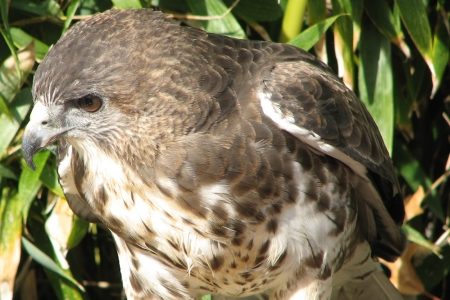
The ‘Io is the only hawk species found in the Hawaiian Islands. It’s endemic to the islands, and you’ll only find it here.
These birds grow up to 20 inches tall and have bulky bodies, making it easy to confuse them for owls. You’ll find the ‘Io flying along the Mauna Loa Road and near the summit of Kīlauea. You could have a look at these binoculars from Adasion Optics that make it effortless to observe animals from a long distance.
The ‘Iolani Palace in Honolulu’ gets its name from this majestic hawk of the Hawaiian skies.
Hawaiian Goose or Nene- the Rarest Goose in the World
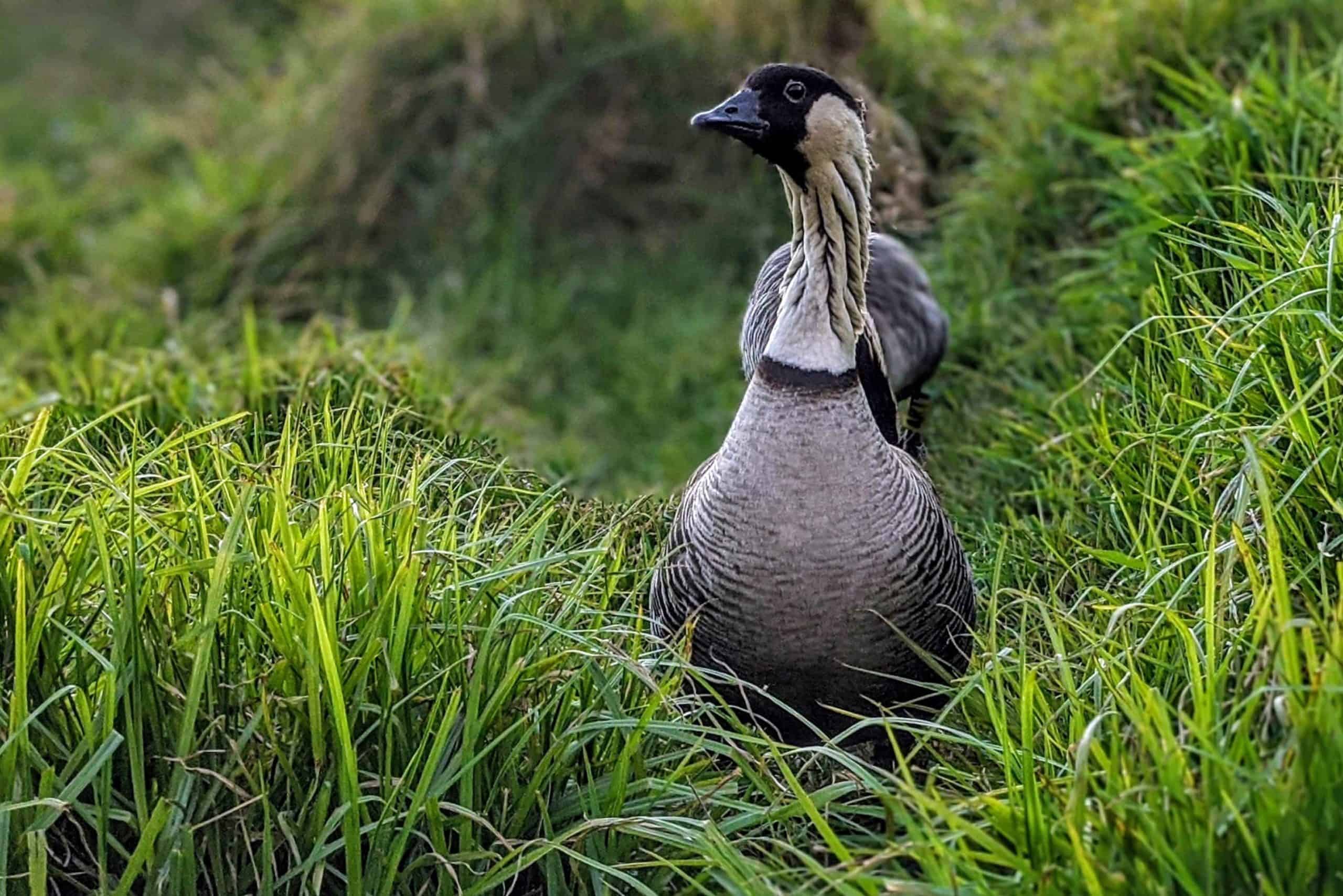
In 1952, this goose almost went extinct, and only 30 of them survived on the Hawaiian islands. The Nene has been bred back, and today there are around 2,500 of these in the wild, making it the rarest goose you’ll set your eyes on. There were eight other goose species in Hawaii, but all went extinct, making Nene the only endemic goose species in Hawaii.
The Nene is the state bird of Hawaii, and it’s named so because of its gentle call. Nene in Hawaiian means to whimper as a sleeping infant. But Nene are also known to moo like cows.
The Nene continues to depend on humans for survival since their populations aren’t high. You’ll find the largest number of Nene living in and around the Hawaii Volcanoes National Park.
You must keep in mind not to feed them as it puts them at risk by making them accustomed to people and cars. The Nene are banded, and it’s illegal to touch, feed, or chase them.
Kamehameha Butterfly- the Official State “Insect”
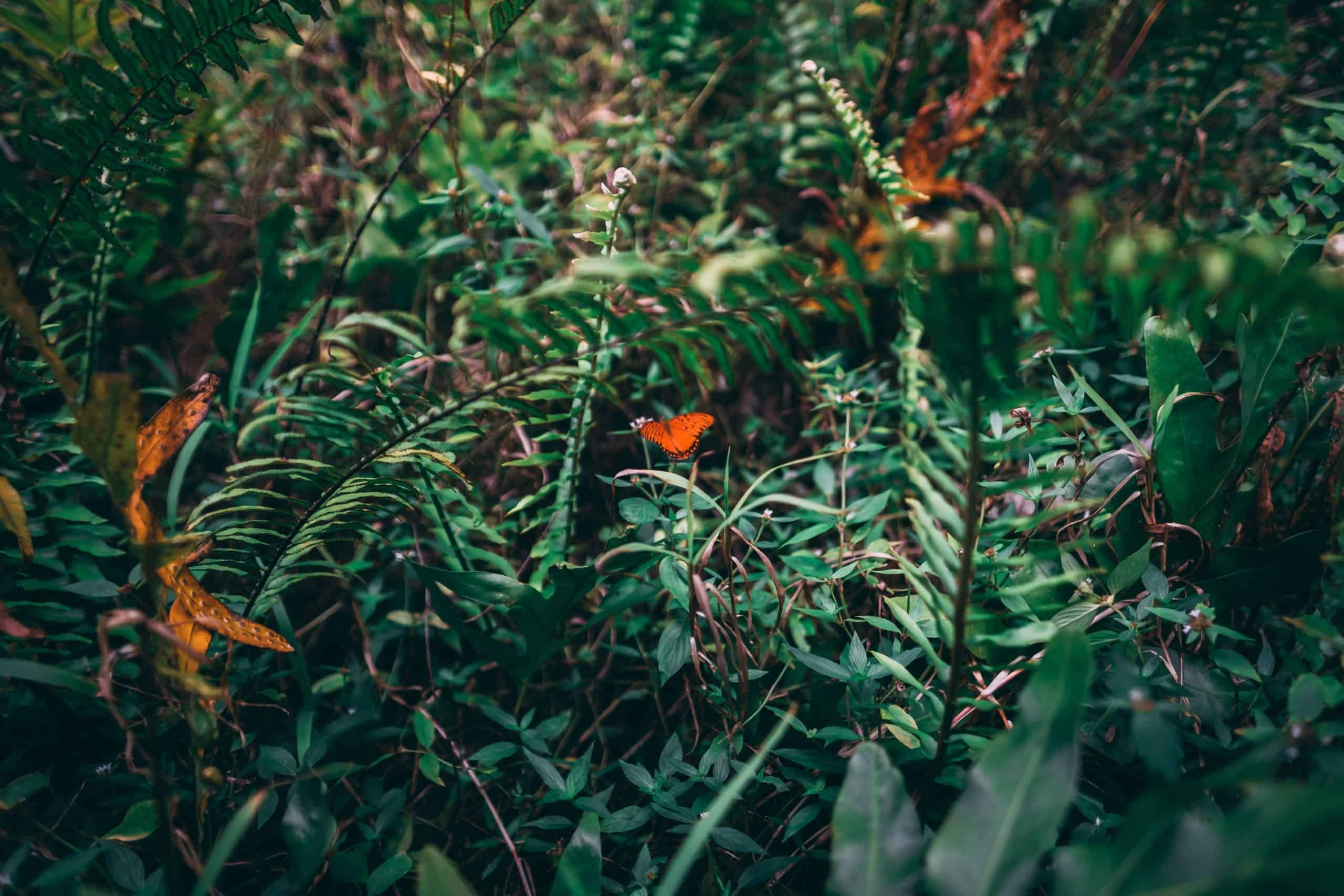
The Pulelehua or Kamehameha butterfly is the state insect for Hawaii. It became the state insect of Hawaii in 2009 after a group of elementary school students proposed the idea.
The Kamehameha butterfly gets its name from the royal family that brought the Hawaiian Islands together (yes, the name doesn’t have any connection with anime). This species of butterflies are endemic to Hawaii. The island has 13 other species of butterflies that are non-native.
The butterfly has bright orange wings, and you can determine its gender based on the color of the spots on its forewings. The male has orange spots, and the female has white ones. The Kamehameha butterfly was found across all the main Hawaiian Islands but is now not found in certain areas.
Happy Face Spider- Spider With a Smiling Face
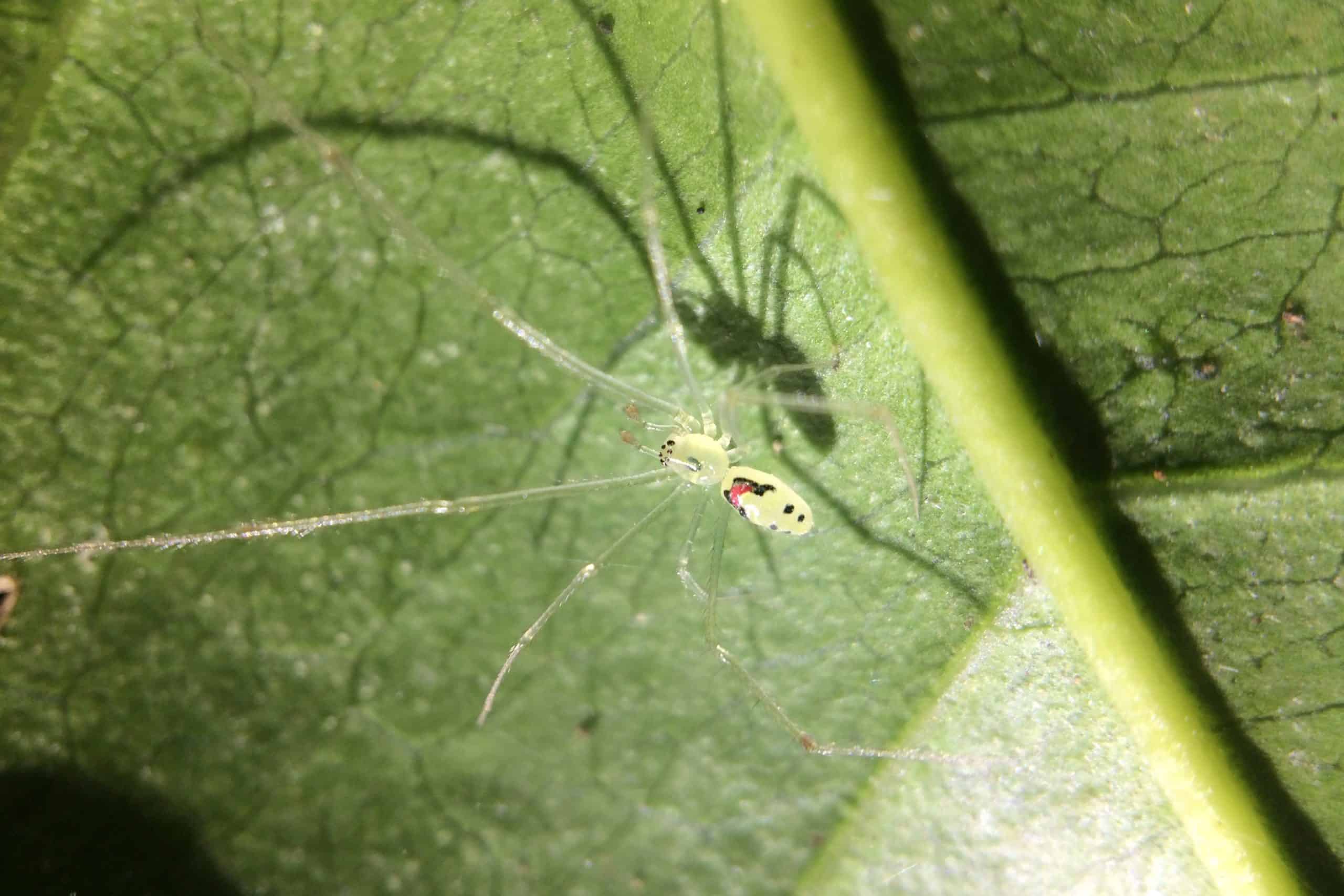
The Nananana Makakiʻi is also known as the happy face spider. The markings on its back make it look like it has a grinning human face, and it resembles emojis. These markings could be to ward off predators.
This spider is yellow and can be easily spotted when it’s on leaves. It sometimes changes its color from yellow to orange, green, or even red, depending on what it eats. You’ll generally find these spiders underneath leaves of plants like the Hawaiian caper and kōpiko ʻula.
Hawaiian Hoary Bat- Longest Expedition by a Bat Species
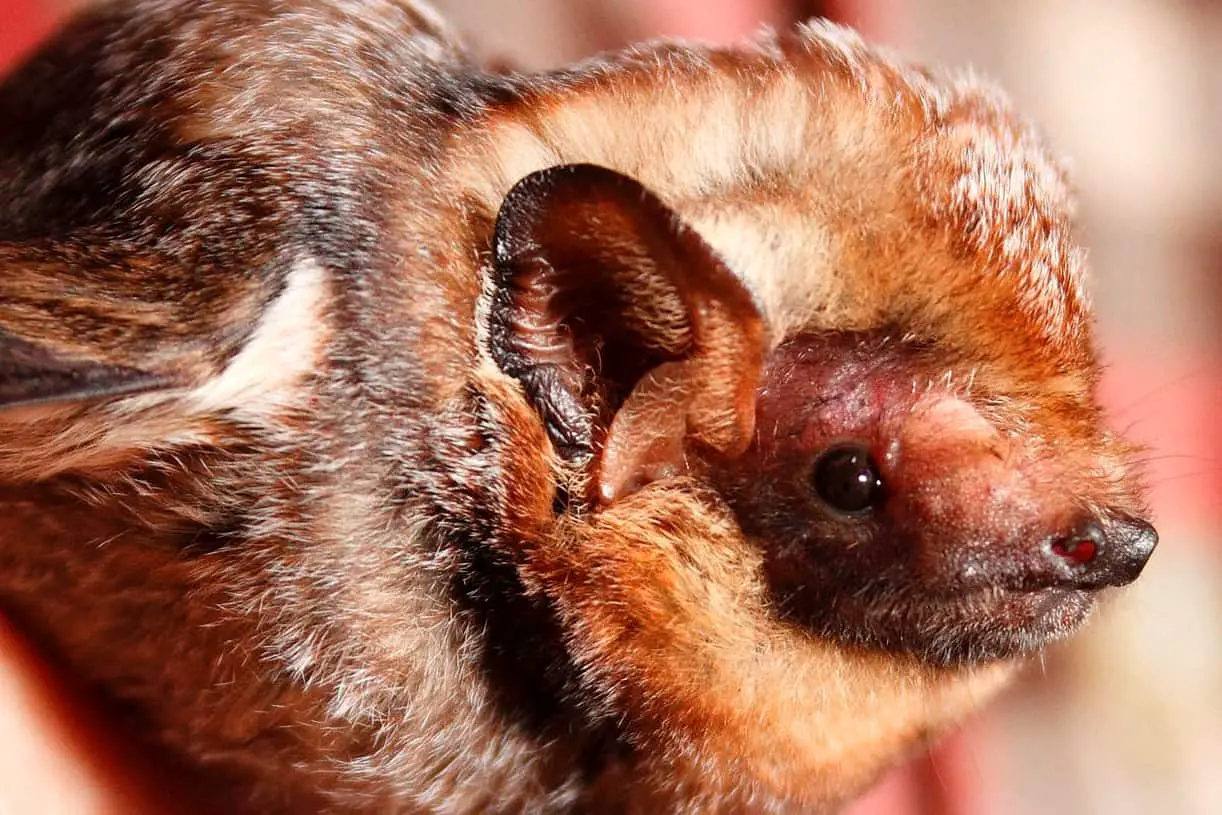
The Hawaiian Hoary bat landed in Hawaii 10,000 years ago. Using the strong Trade Winds that blow toward this isolated island chain, this bat flew over 2,000 miles of ocean to get here. It’s believed that this journey is the single longest overwater flight of all the bat’s species.
This bat is the only native terrestrial mammal here and has been the state land mammal of Hawaii since 2015. It’s Hawaiian name, ‘Ōpe’ ape ‘a, means “half-leaf,” referring to the bat’s open wing looking like a section of the taro leaf. These bats are small and weigh between 14 to 18 grams, but their wingspan can grow one foot wide.
The Hawaiian Hoary bat is generally found on trees and not in caves. They move between higher and lower elevations on the island, depending on the temperature. You’ll spot them around sunset when they move out of their trees to hunt, and you’re likely to see them along pasture edges and clearings.
Final Thoughts
Hawaii has plenty to offer to curious explorers. Once you’ve enjoyed the swaying palms and the stunning beaches, you could check out the Hawaii Volcanoes National Park and see the rare animals that inhabit this land.
You’ll find it intriguing to see the hawksbill turtle’s shell and the green sea turtle’s size. The ‘Opihi’s intricate shape and the difficulty in plucking it off a rock will make for an exciting experience. You’ll enjoy observing the majestic ‘Io soaring in the skies and the gentle Nene flitting around.
The vibrant colors of the Kamehameha butterfly and the happy face spider will be a delight to the eyes. And do not miss the only native terrestrial mammal of Hawaii- the Hawaiian Hoary bat.
Just remember, when you’re out in the sun, make sure to put on a reef-safe sunscreen to keep yourself and the oceans safe (in case you’re taking a dip).
Which of these animals are you most excited to see?
Related: A Complete US National Park List

